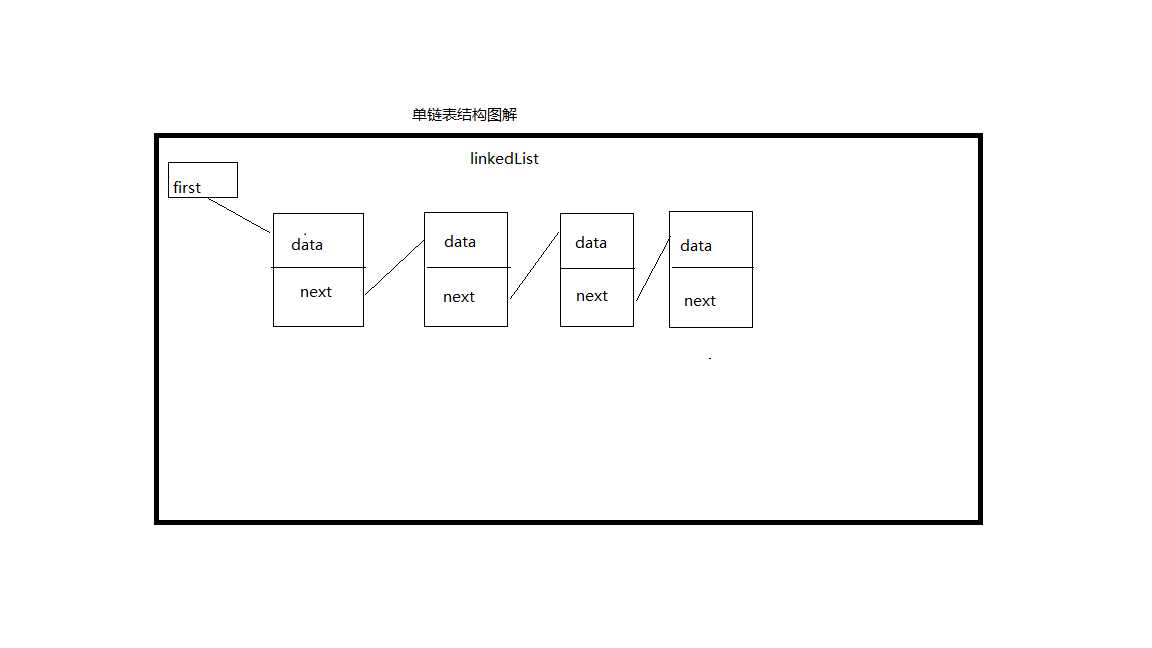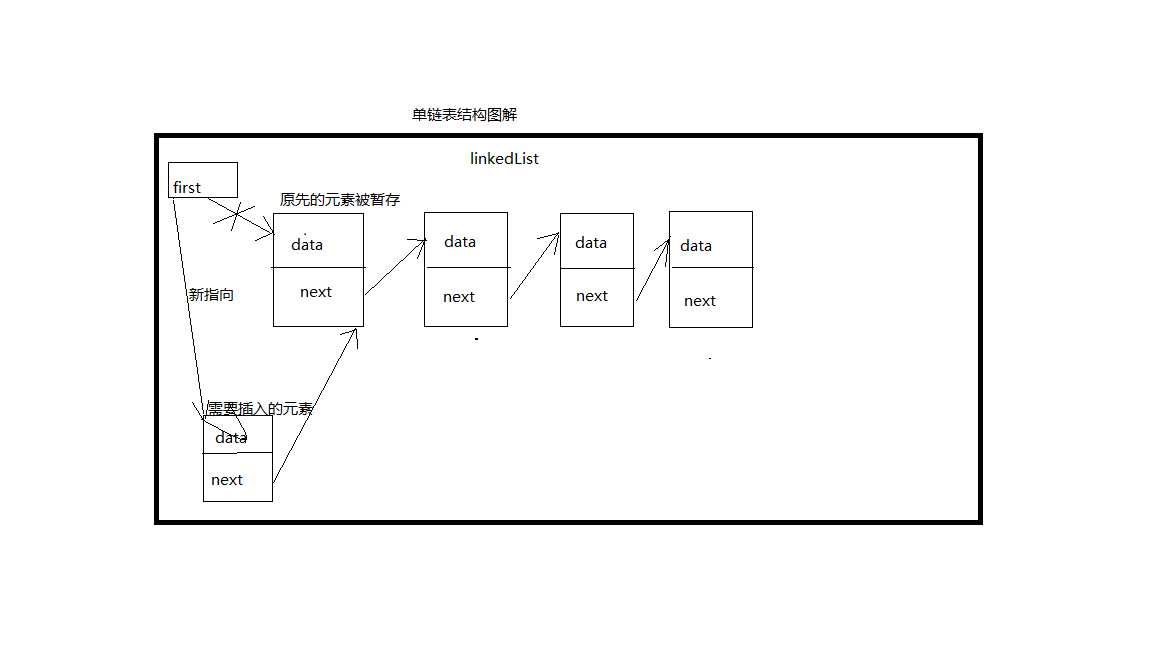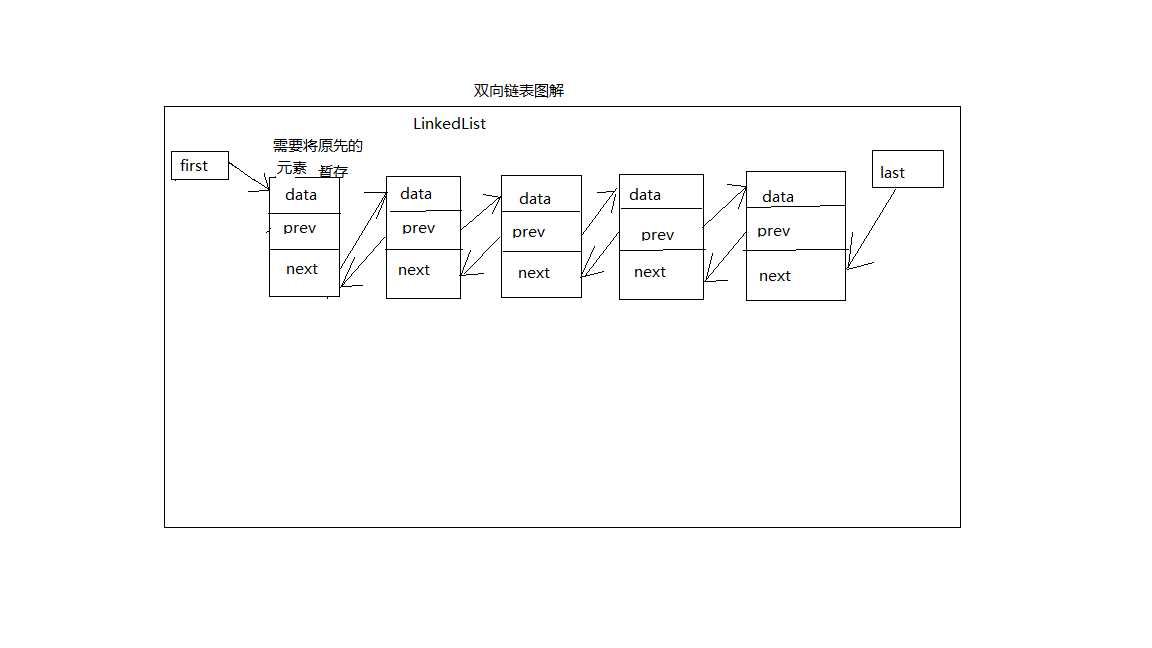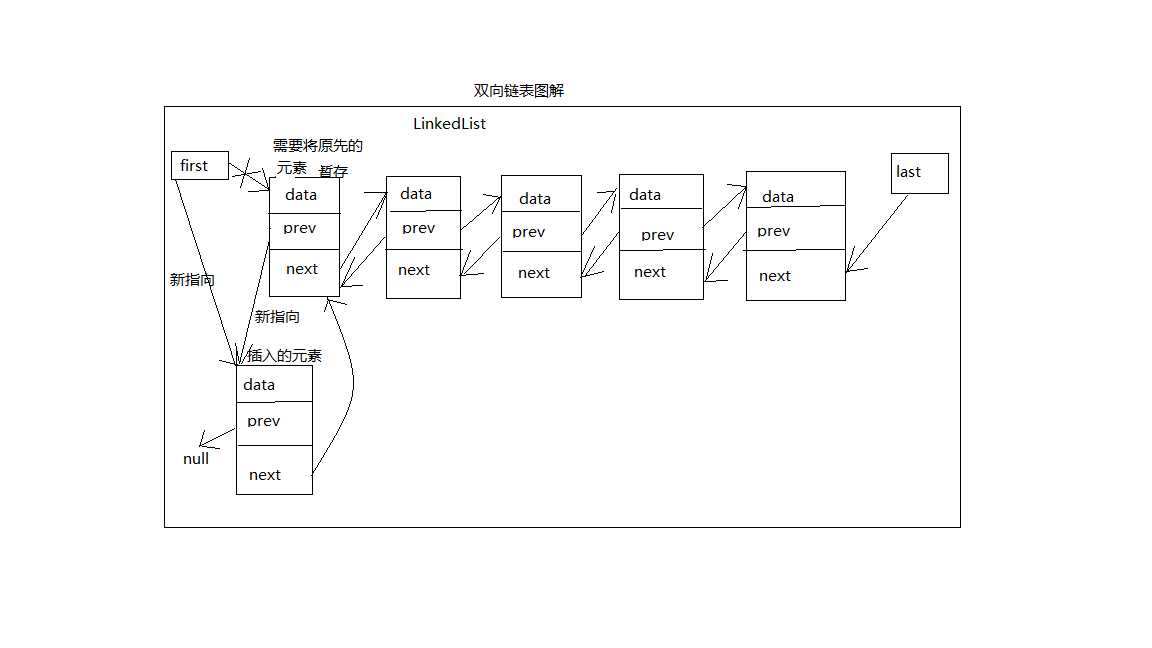标签:分享图片 containe container ber node bubuko dex 17. .com
项目中经常会用到LinkedList集合来存储数据,打算写一篇LinkedList的源码解析,而LinkedList是基于链表结构存储数据的,这篇博文将解析链表数据结构,包括单向链表和双向链表;
1:单向链表:
单向链表的链表对象维护了一个 first 引用,该引用指向节点链表中的第一个节点对象,每个节点对象维护一个 next 引用,next引用指向下一个节点对象;(这里注意:是引用指向的是节点对象:节点对象包含存储的数据和next引用)
以下是单向链表的图解:

java代码实现如下:
public class LinkedListDemo1 { //表示整个链表对象
private Node first; //链表对象的第一个引用
public LinkedListDemo1(){
}
public Node getFirst() {
return first;
}
public void setFirst(Node first) {
this.first = first;
}
class Node{ //节点对象
Item item; //存储的数据对象
Node next; //下一个节点对象的引用
public Item getItem() {
return item;
}
public void setItem(Item item) {
this.item = item;
}
public Node getNext() {
return next;
}
public void setNext(Node next) {
this.next = next;
}
}
}
当需要在首位置插入元素时,图解如下:first 引用指向需要插入到链表中的节点对象,新的节点对象的next引用指向原先的首节点对象;

java代码实现如下:
|
1
2
3
4
5
6
7
8
9
10
11
12
13
|
//插入对象到链表首位置 public void insertFirst(Item item){ //创建链表对象 LinkedListDemo1 list=new LinkedListDemo1(); //原来的首个节点暂存在:用oldFirst引用指向 Node oldFirst=first; //创建需要插入的节点对象 Node newNode=new Node(); newNode.item=item; //新节点对象的next引用指向原先的首节点对象 newNode.next=oldFirst; } |
当然这里的插入没有考虑首位置的节点对象为null的情况,插入到其他位置的节点实现原理和插入到首位置的基本差不多;
下面接收双向链表的实现原理:
链表对象中维护一个first 引用和 last引用,分别指向链表中的首末节点对象;每个节点对象维护 存储的数据对象引用,prev和next引用,用来指向前后节点对象;
双向链表的图解:

java代码实现链表对象如下:
|
1
2
3
4
5
6
7
8
9
10
11
12
13
14
15
16
17
18
19
20
21
22
23
24
25
26
27
28
29
30
31
32
33
34
35
36
37
38
39
40
41
42
43
44
45
46
47
48
49
50
51
52
53
54
55
56
57
58
59
60
61
|
public class LinkedListDemo2 { private Node first; private Node last; public LinkedListDemo2(){ } public Node getFirst() { return first; } public void setFirst(Node first) { this.first = first; } public Node getLast() { return last; } public void setLast(Node last) { this.last = last; } class Node{ Item item; Node prev; Node next; public Item getItem() { return item; } public void setItem(Item item) { this.item = item; } public Node getPrev() { return prev; } public void setPrev(Node prev) { this.prev = prev; } public Node getNext() { return next; } public void setNext(Node next) { this.next = next; }}} |
双向链表插入元素到首位:
图解:

java代码实现:
|
1
2
3
4
5
6
7
8
9
10
11
12
|
public void insertFirst(Item item){ //暂存原先首节点对象 Node oldFirst=first; //创建新的节点对象 Node newNode=new Node(); newNode.item=item; newNode.next=first; //first引用指向新节点对象 first=newNode; //原先的节点对象的prev引用指向新节点对象 oldFirst.prev=newNode; } |
到此,单向链表结构和双向链表结构就解析完了,下一篇博客中将解析 LinkedList 的源码;
标签:分享图片 containe container ber node bubuko dex 17. .com
原文地址:https://www.cnblogs.com/austinspark-jessylu/p/9555122.html